Matthias Kahl
So2Sat POP -- A Curated Benchmark Data Set for Population Estimation from Space on a Continental Scale
Apr 07, 2022

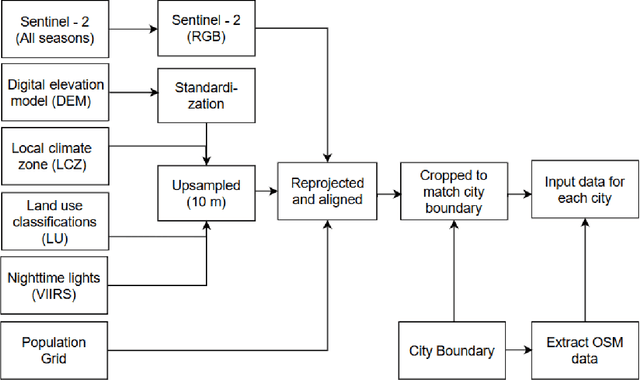

Abstract:Obtaining a dynamic population distribution is key to many decision-making processes such as urban planning, disaster management and most importantly helping the government to better allocate socio-technical supply. For the aspiration of these objectives, good population data is essential. The traditional method of collecting population data through the census is expensive and tedious. In recent years, machine learning methods have been developed to estimate the population distribution. Most of the methods use data sets that are either developed on a small scale or not publicly available yet. Thus, the development and evaluation of the new methods become challenging. We fill this gap by providing a comprehensive data set for population estimation in 98 European cities. The data set comprises digital elevation model, local climate zone, land use classifications, nighttime lights in combination with multi-spectral Sentinel-2 imagery, and data from the Open Street Map initiative. We anticipate that it would be a valuable addition to the research community for the development of sophisticated machine learning-based approaches in the field of population estimation.
Generative modeling of spatio-temporal weather patterns with extreme event conditioning
Apr 26, 2021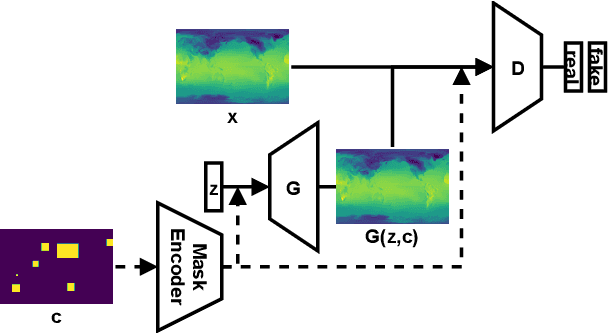
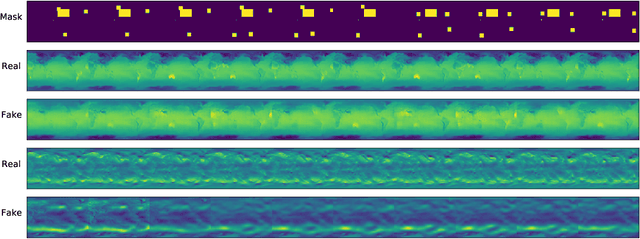
Abstract:Deep generative models are increasingly used to gain insights in the geospatial data domain, e.g., for climate data. However, most existing approaches work with temporal snapshots or assume 1D time-series; few are able to capture spatio-temporal processes simultaneously. Beyond this, Earth-systems data often exhibit highly irregular and complex patterns, for example caused by extreme weather events. Because of climate change, these phenomena are only increasing in frequency. Here, we proposed a novel GAN-based approach for generating spatio-temporal weather patterns conditioned on detected extreme events. Our approach augments GAN generator and discriminator with an encoded extreme weather event segmentation mask. These segmentation masks can be created from raw input using existing event detection frameworks. As such, our approach is highly modular and can be combined with custom GAN architectures. We highlight the applicability of our proposed approach in experiments with real-world surface radiation and zonal wind data.
Training Auto-encoder-based Optimizers for Terahertz Image Reconstruction
Jul 02, 2019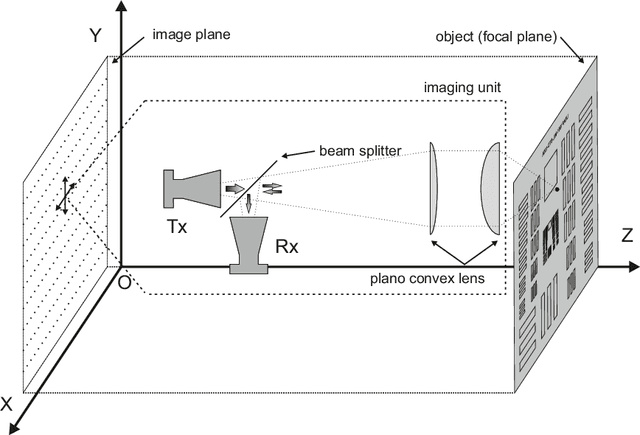
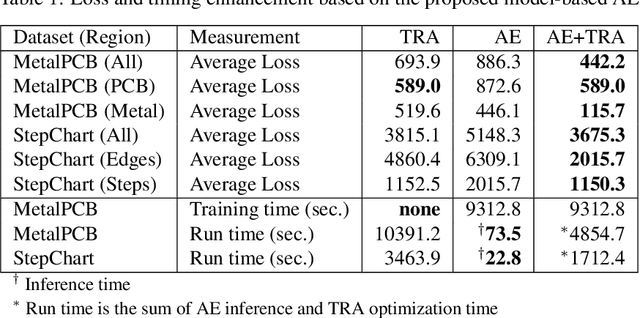
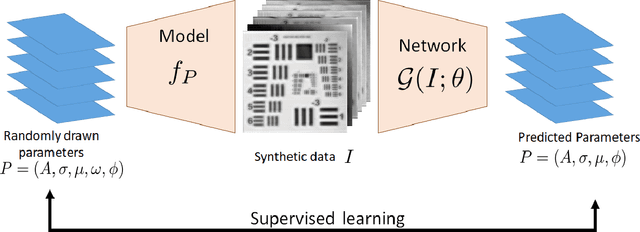

Abstract:Terahertz (THz) sensing is a promising imaging technology for a wide variety of different applications. Extracting the interpretable and physically meaningful parameters for such applications, however, requires solving an inverse problem in which a model function determined by these parameters needs to be fitted to the measured data. Since the underlying optimization problem is nonconvex and very costly to solve, we propose learning the prediction of suitable parameters from the measured data directly. More precisely, we develop a model-based autoencoder in which the encoder network predicts suitable parameters and the decoder is fixed to a physically meaningful model function, such that we can train the encoding network in an unsupervised way. We illustrate numerically that the resulting network is more than 140 times faster than classical optimization techniques while making predictions with only slightly higher objective values. Using such predictions as starting points of local optimization techniques allows us to converge to better local minima about twice as fast as optimization without the network-based initialization.
 Add to Chrome
Add to Chrome Add to Firefox
Add to Firefox Add to Edge
Add to Edge